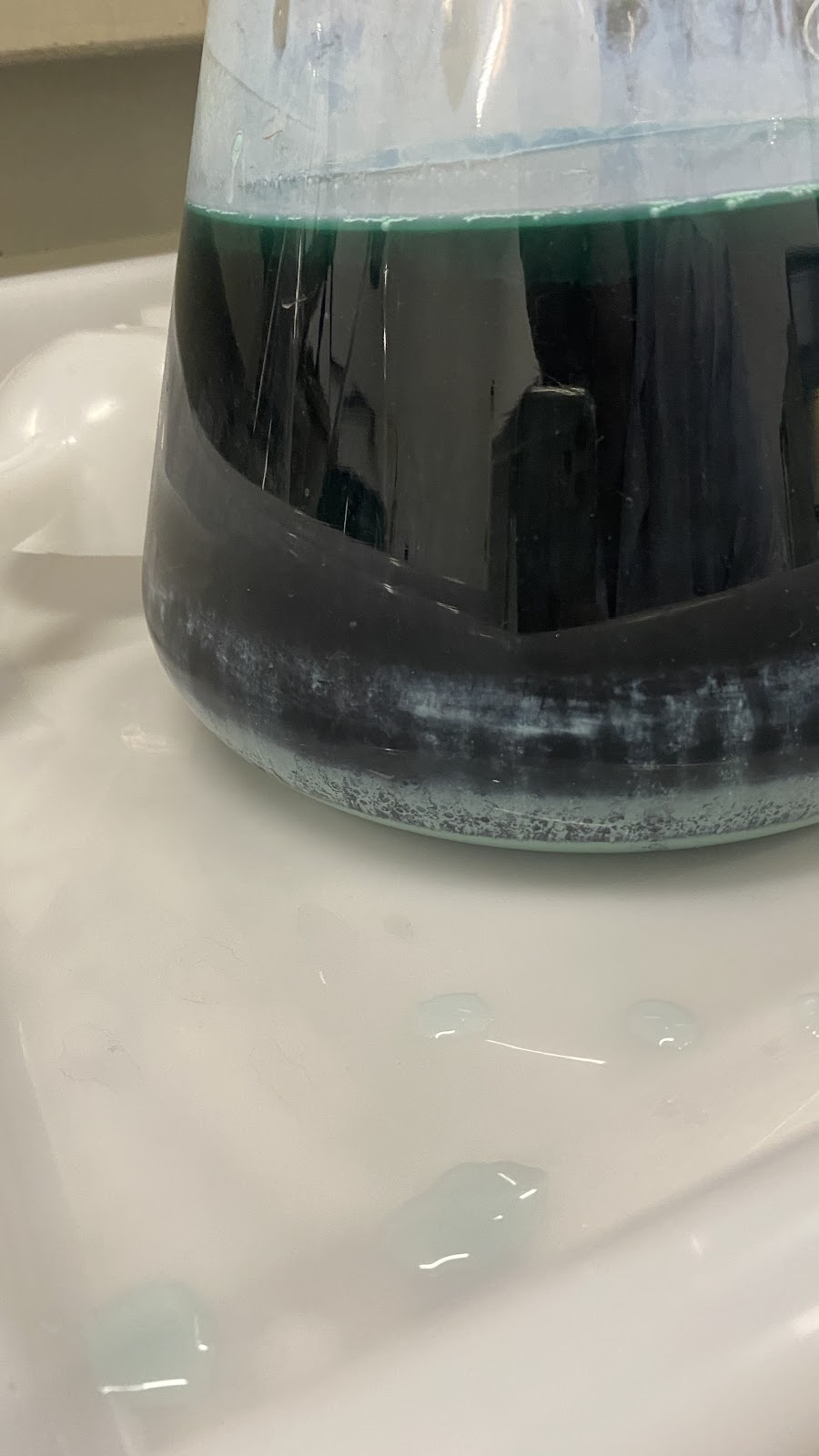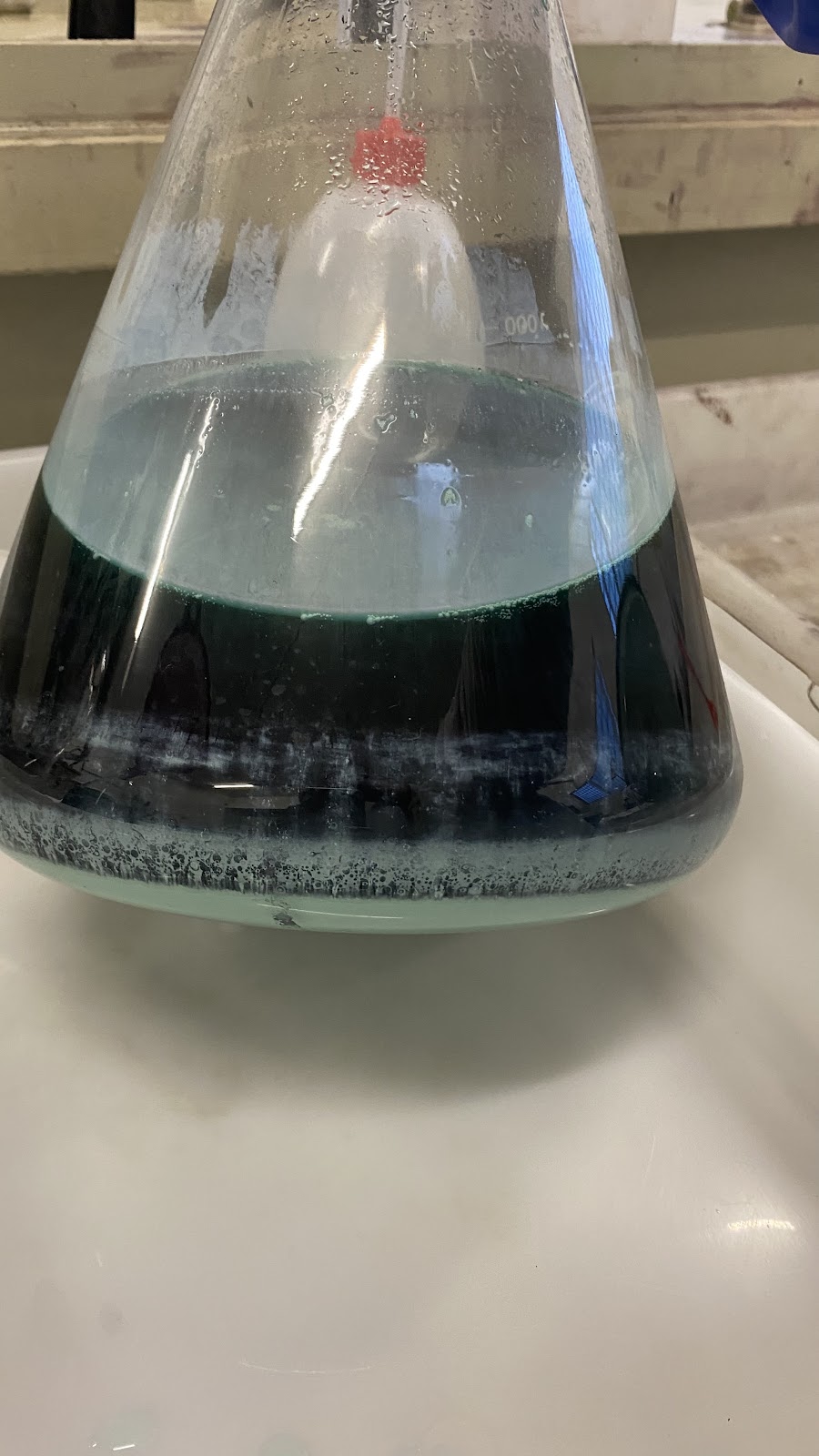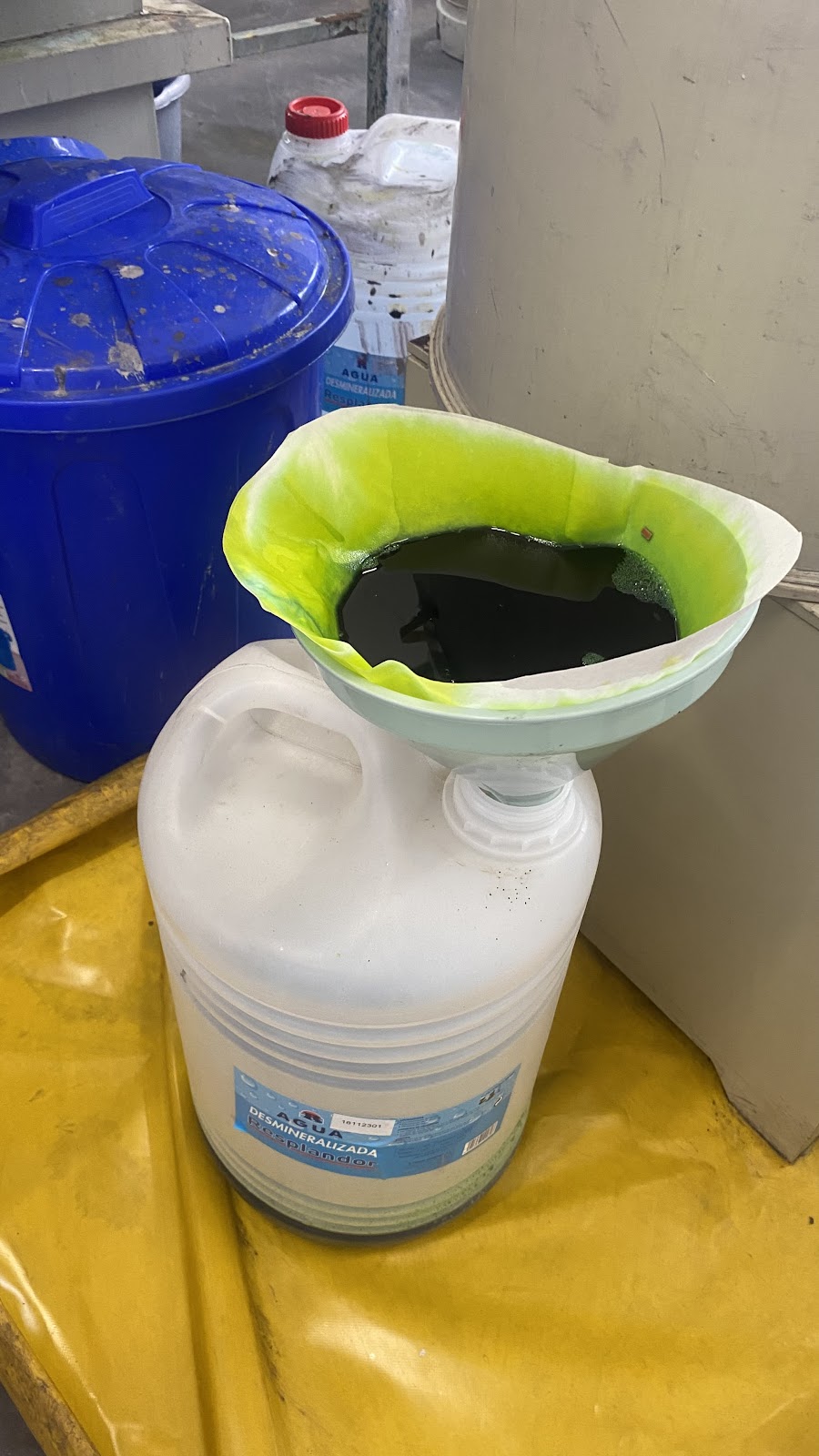Hi guys,
After studying a lot I decided to start recovering platinum from an alloy. I tell you my story.
It had an initial alloy weight of 480g. This had the following proportions: 500 Au, 36 Pt, 250 Ag, 184 Cu, 6 Pd and a little Zn and Ni.
Since the amount of silver was high, I decided to add copper to lower the proportion to 10%. I added 739.2g of Cu and made shot from this.
I was left with a weight of 1227g of alloy with proportions:
Cu:684
Au: 189.63
Pt:17.25
Ag:91.58
and some Zn, Pd and Ni.
Now the silver ratio was low enough to be able to attack directly with AR and heat.
Since there was a lot of it, it took too long to react, I had to leave and the reaction was not over. So the next day I filtered it and added fresh aqua regia to continue reacting the grit that remained undissolved.
I watched as a green scab formed, the likes of which I had never seen before. I thought that since it had so much copper, it was possibly CuCl2, could anyone confirm? attached photo


I continued filtering the solution to remove any silver chlorides that might be present and leaving the solution clean.

After this point, I added 12.5g of ammonium chloride to my solution. and nothing happened.
Then I thought I had forgotten the step of removing the HNO3, I heated for several days to obtain the syrup, I also added sulfamic acid, and I still never managed to obtain the orange ammonium hexachloroplatinate powder.
I wanted to ask if you know if a large amount of copper can negatively affect the recovery of platinum, and if so, how could it act when the amount of silver is greater than 12%?
I hope you can help me, I don't know why sometimes platinum recoveries don't go well. I would like to understand what is happening.
Thank you very much and best regards.
After studying a lot I decided to start recovering platinum from an alloy. I tell you my story.
It had an initial alloy weight of 480g. This had the following proportions: 500 Au, 36 Pt, 250 Ag, 184 Cu, 6 Pd and a little Zn and Ni.
Since the amount of silver was high, I decided to add copper to lower the proportion to 10%. I added 739.2g of Cu and made shot from this.
I was left with a weight of 1227g of alloy with proportions:
Cu:684
Au: 189.63
Pt:17.25
Ag:91.58
and some Zn, Pd and Ni.
Now the silver ratio was low enough to be able to attack directly with AR and heat.
Since there was a lot of it, it took too long to react, I had to leave and the reaction was not over. So the next day I filtered it and added fresh aqua regia to continue reacting the grit that remained undissolved.
I watched as a green scab formed, the likes of which I had never seen before. I thought that since it had so much copper, it was possibly CuCl2, could anyone confirm? attached photo
I continued filtering the solution to remove any silver chlorides that might be present and leaving the solution clean.
After this point, I added 12.5g of ammonium chloride to my solution. and nothing happened.
Then I thought I had forgotten the step of removing the HNO3, I heated for several days to obtain the syrup, I also added sulfamic acid, and I still never managed to obtain the orange ammonium hexachloroplatinate powder.
I wanted to ask if you know if a large amount of copper can negatively affect the recovery of platinum, and if so, how could it act when the amount of silver is greater than 12%?
I hope you can help me, I don't know why sometimes platinum recoveries don't go well. I would like to understand what is happening.
Thank you very much and best regards.














































